Tag: moon
-
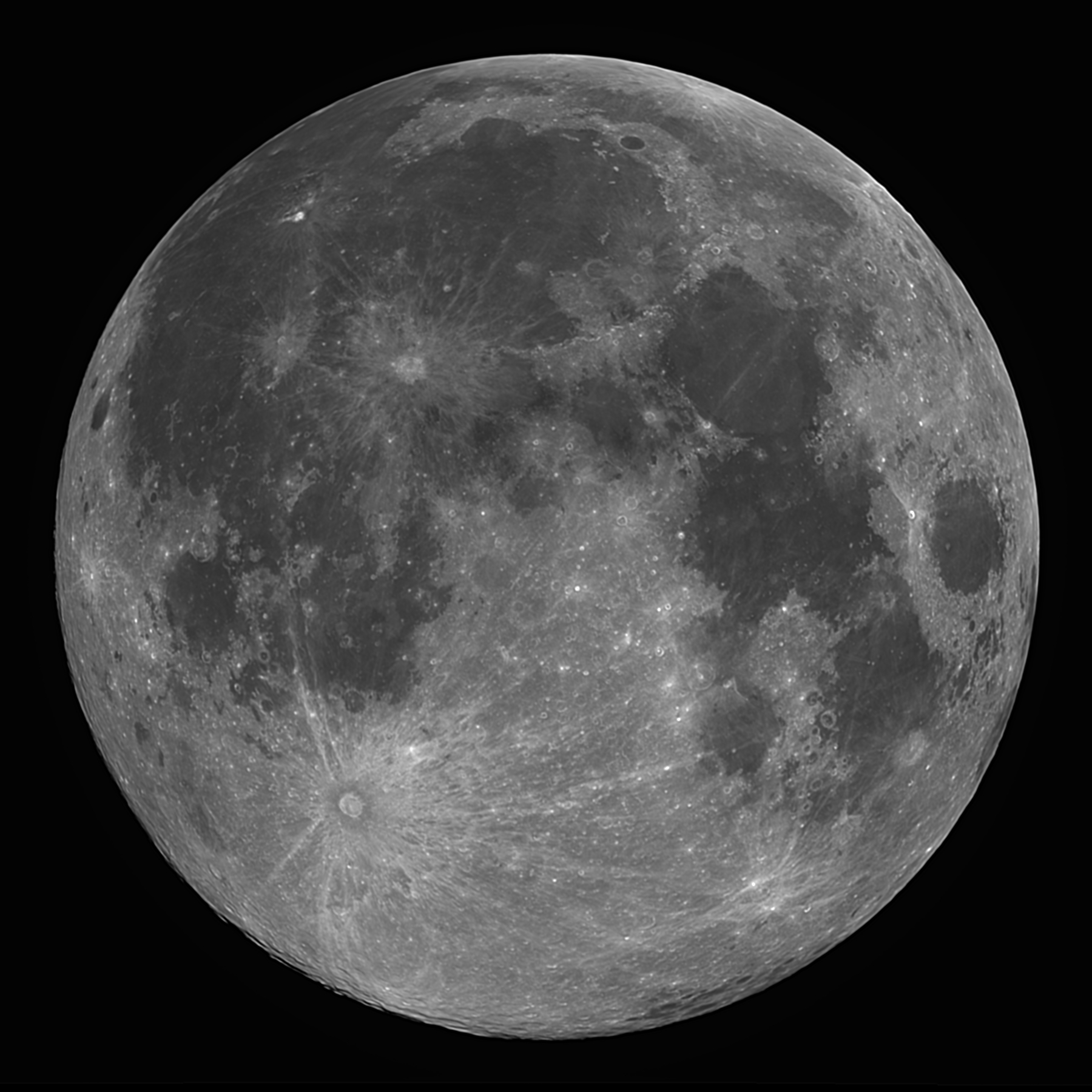
-
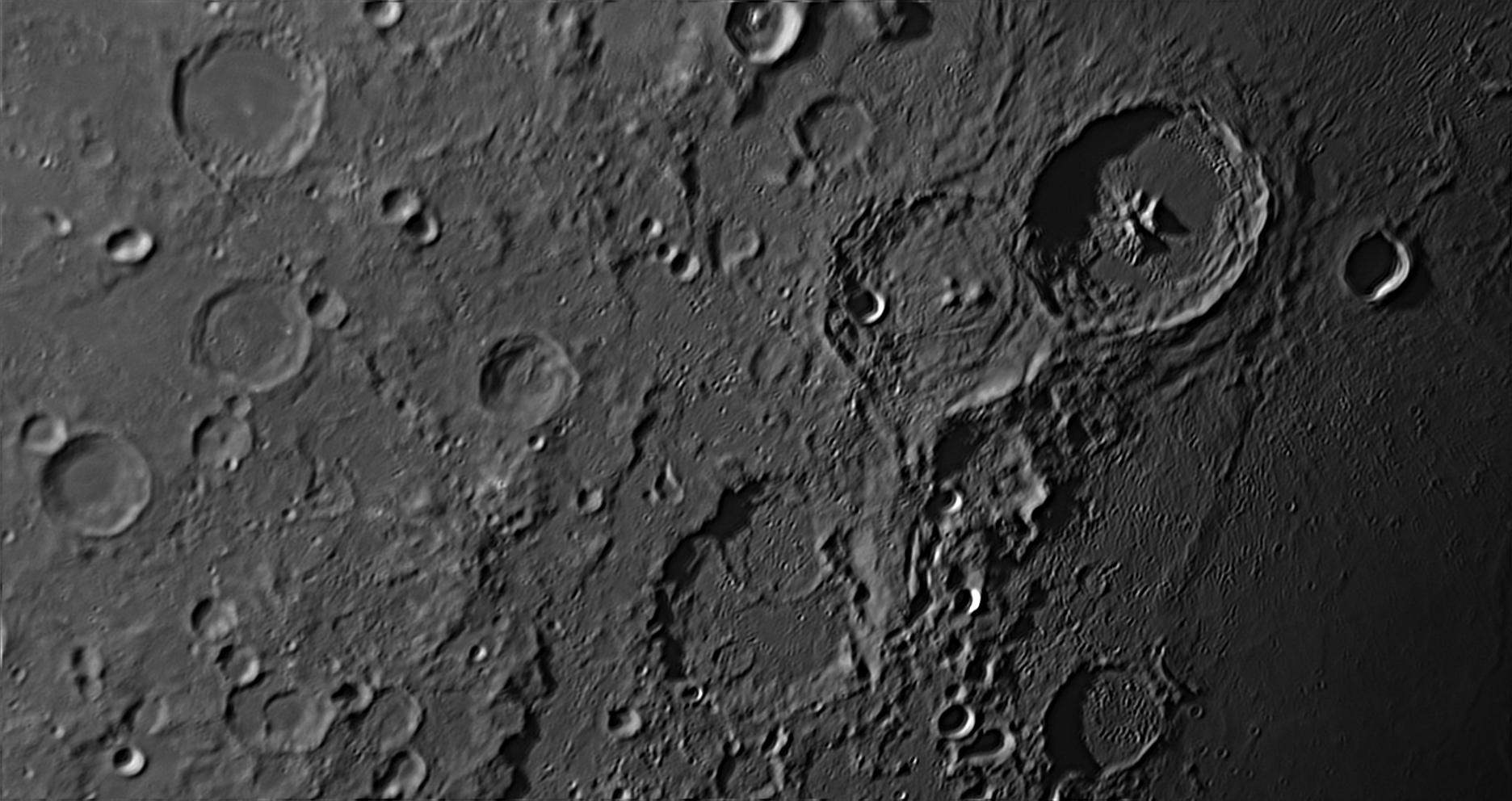
Moon
The moon photographed in the phase close to the last quarter on August 24, 2024 at 1:11 UTC and 1:18 UTC. In the fist photo the crater Theophilus is especially evident with a diameter of 101 kilometers with a mountain formation in the center with four peaks that rise for about 1400 meters.A little further…
-
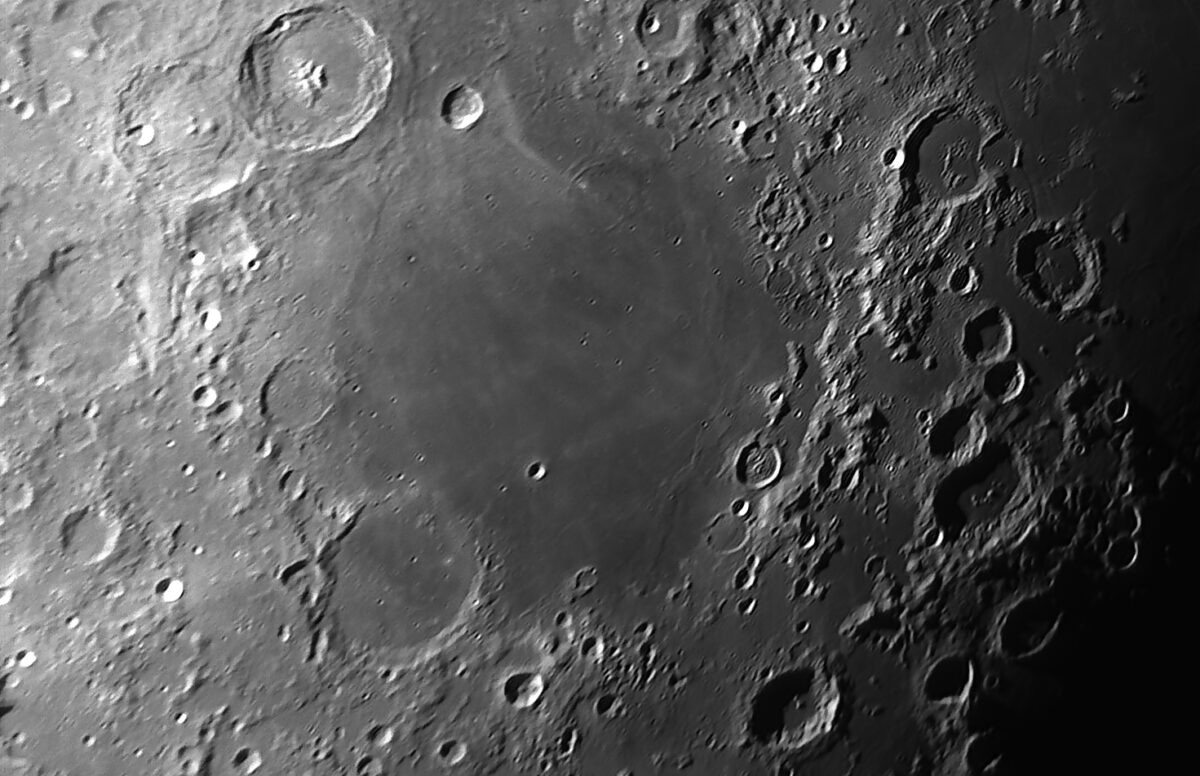
-
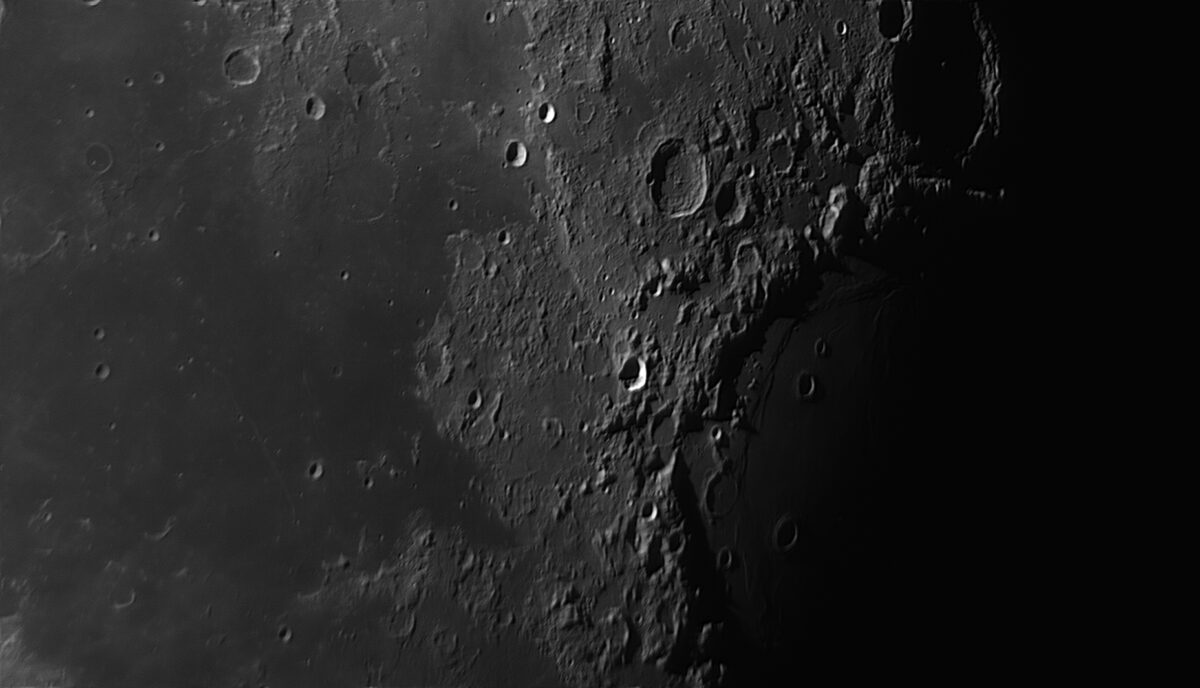
-
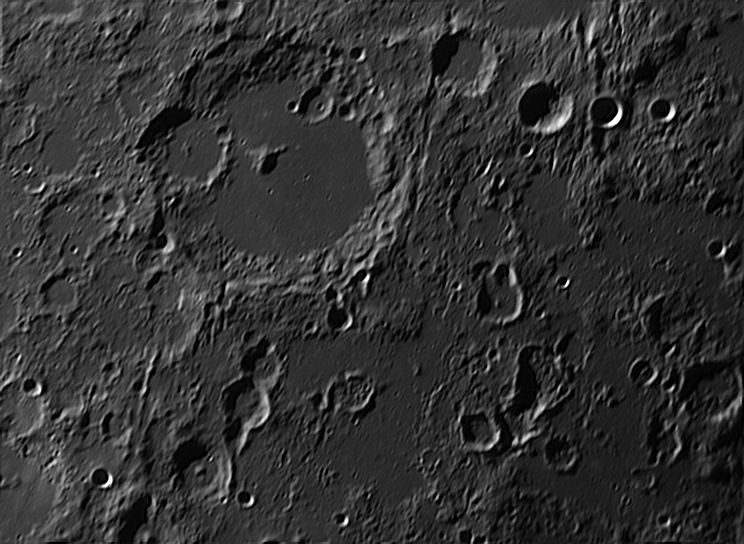
-
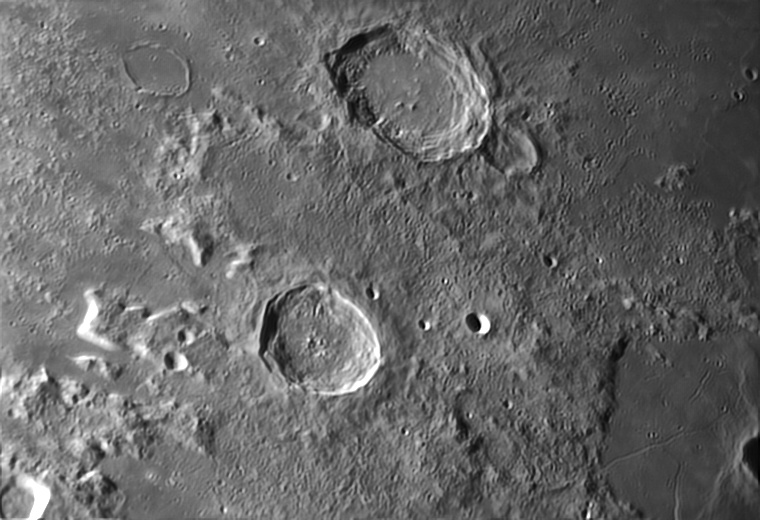
Aristoteles and Eudoxus
Aristoteles and Eudoxus are two craters about 88 and 68 kilometers wide.The flat area in the lower right is Lacus Mortis (Lake of Death) with the rimae Burg.
-
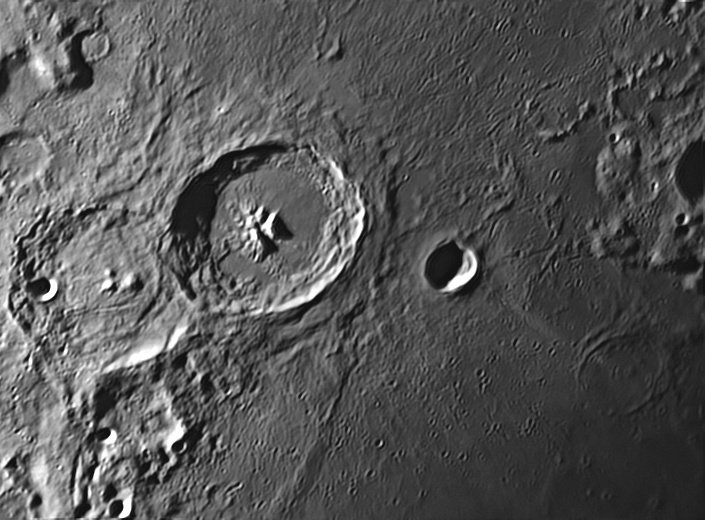
Theophilus
Theophilus is a crater 101 kilometres wide, 4400 meters deep and located between Sinus Asperitatis and Mare Nectaris.It is characterized by a central mountain group that rises for about 2000 meters from the bottom of the crater. You can see the same crater from an other point of view using the data from Lunar Orbiter…
-
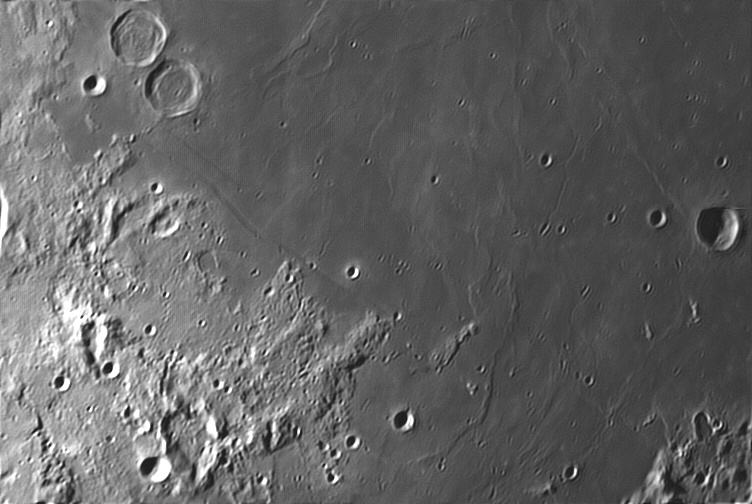
The Apollo 11 site
The photo shows the southern edge of the Sea of Tranquility where the Eagle lem of the Apollo 11 mission landed on 20 July 1969 bringing astronauts Neil Armstrong and Buzz Aldrin to the Moon while the Columbia module with Michael Collins on board remained in lunar orbit.In their honor some of the area’s craters…
-
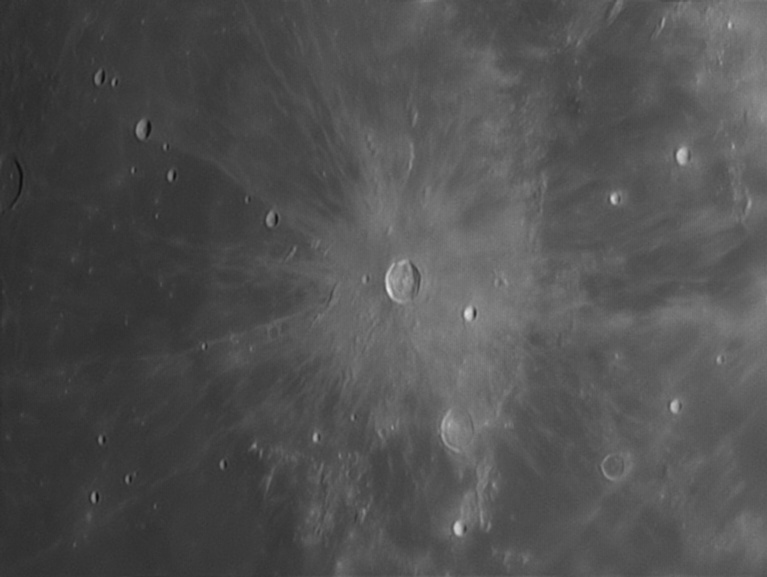
-
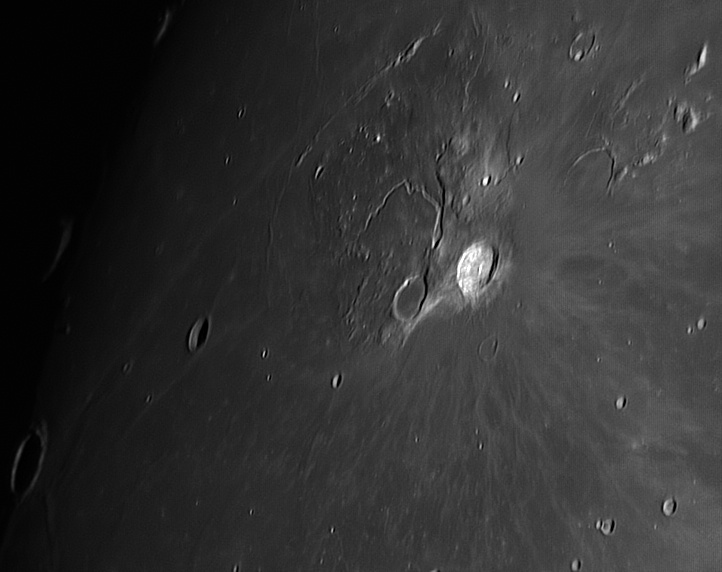
Aristarchus
Aristarchus is a crater with a diameter of 40 km and is one of the brightest areas on the Moon.Close to it there are the Herodotus crater from which the deep rhyme Vallis Schroteri starts and the ghost crater Prinz.
